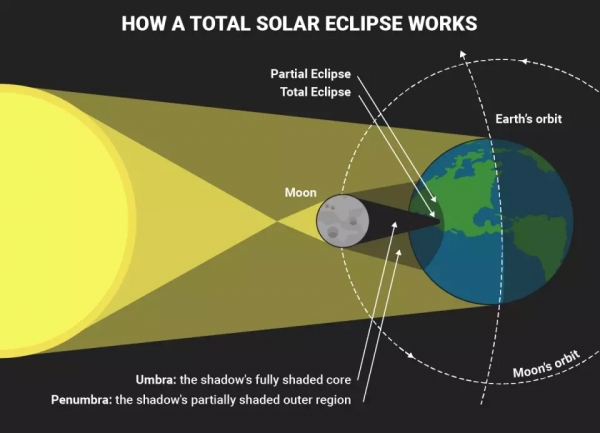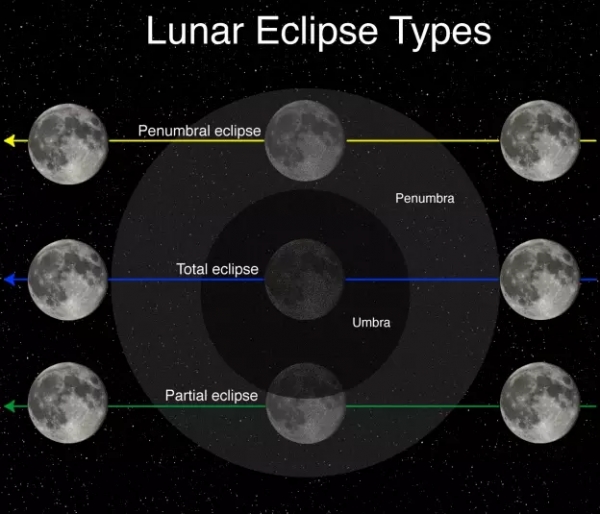
 Data Structure
Data Structure Networking
Networking RDBMS
RDBMS Operating System
Operating System Java
Java MS Excel
MS Excel iOS
iOS HTML
HTML CSS
CSS Android
Android Python
Python C Programming
C Programming C++
C++ C#
C# MongoDB
MongoDB MySQL
MySQL Javascript
Javascript PHP
PHP
- Selected Reading
- UPSC IAS Exams Notes
- Developer's Best Practices
- Questions and Answers
- Effective Resume Writing
- HR Interview Questions
- Computer Glossary
- Who is Who
How many different types of eclipses are there?
An Eclipse is formed when a celestial body is obscured by another. We know that eclipses occur when sun, moon, and earth align in a straight line. The Solar eclipse occurs when the moon comes in between the sun and the earth. The Lunar eclipse is formed when the earth blocks the way for the sunlight to reach the moon.
Penumbra and Antumbra
The umbra is the innermost and darkest part of the shadow, which is the area when an observer can experience the eclipse completely. The Penumbra is the area in which only a portion of the light is obscured by the occluding body. The antumbra is the region where an occluding body appears completely within the disc of the light source.

There are four kinds of Solar Eclipses. They are
Total Solar Eclipse: This occurs when the moon completely covers the sun, as seen from the earth. The area under this shadow experiences a total solar eclipse.
Partial Solar Eclipse: The eclipse will be partial when the moon partially covers the sun.
Annular Solar Eclipse: When the moon appears smaller than the Sun and the sunlight surrounds the moon as a ring. Such an ellipse is called an Annular Eclipse.
Hybrid Solar Eclipse: A Hybrid eclipse is a rare form where the eclipse changes from annular to solar and solar to annular during its course.

There are three types of Lunar Eclipses. They are
Total Lunar Eclipse: This occurs when the earth’s umbra will be able to darken the whole of the moon’s area so that the moon becomes completely invisible.
Partial Lunar Eclipse: This occurs when earth’s umbra is able to cover the moon’s area partially.
Penumbral Lunar Eclipse: This occurs when the moon travels through the faint penumbral portion of earth’s shadow.

